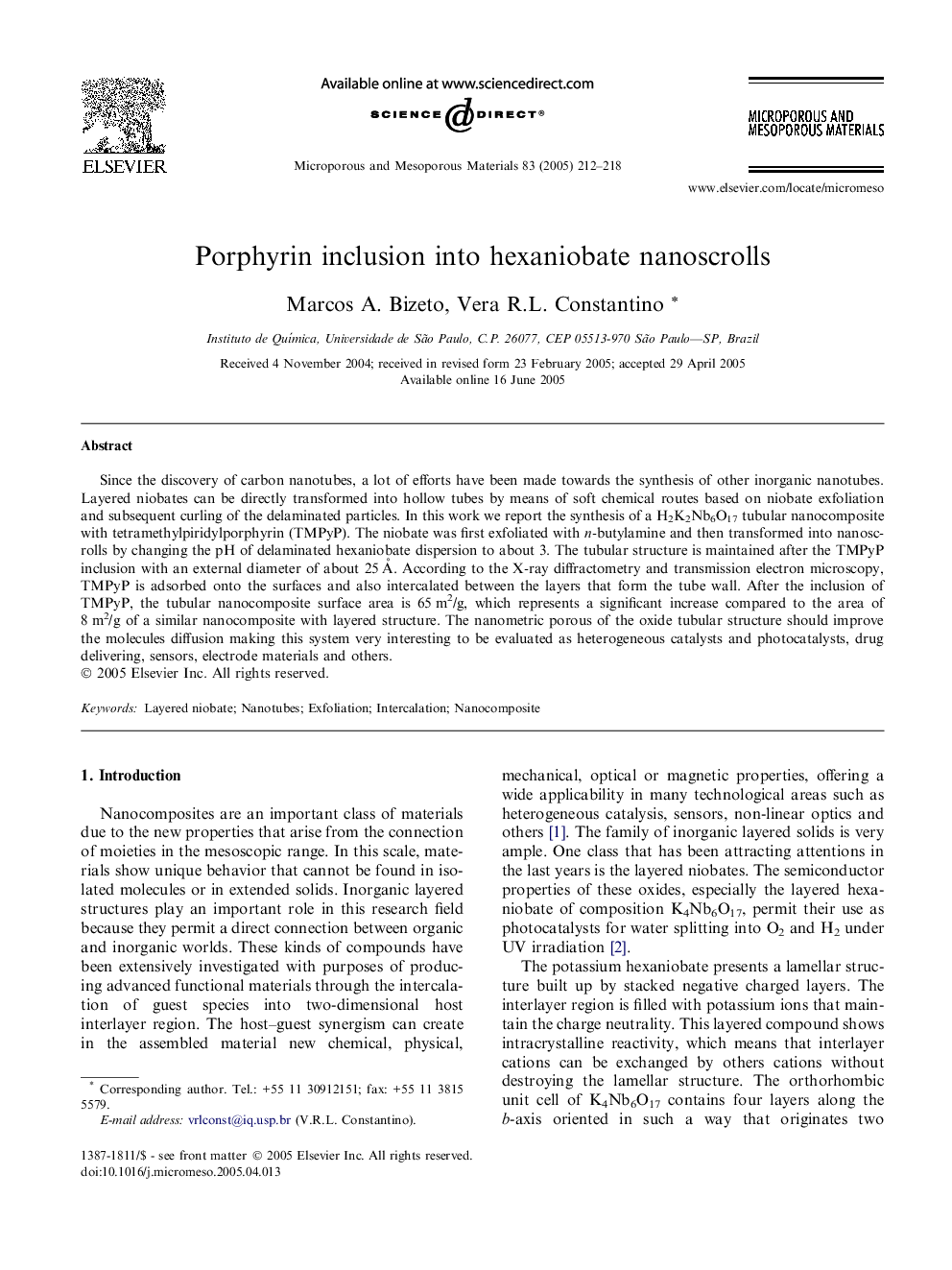| Article ID | Journal | Published Year | Pages | File Type |
|---|---|---|---|---|
| 9617652 | Microporous and Mesoporous Materials | 2005 | 7 Pages |
Abstract
Since the discovery of carbon nanotubes, a lot of efforts have been made towards the synthesis of other inorganic nanotubes. Layered niobates can be directly transformed into hollow tubes by means of soft chemical routes based on niobate exfoliation and subsequent curling of the delaminated particles. In this work we report the synthesis of a H2K2Nb6O17 tubular nanocomposite with tetramethylpiridylporphyrin (TMPyP). The niobate was first exfoliated with n-butylamine and then transformed into nanoscrolls by changing the pH of delaminated hexaniobate dispersion to about 3. The tubular structure is maintained after the TMPyP inclusion with an external diameter of about 25Â Ã
. According to the X-ray diffractometry and transmission electron microscopy, TMPyP is adsorbed onto the surfaces and also intercalated between the layers that form the tube wall. After the inclusion of TMPyP, the tubular nanocomposite surface area is 65Â m2/g, which represents a significant increase compared to the area of 8Â m2/g of a similar nanocomposite with layered structure. The nanometric porous of the oxide tubular structure should improve the molecules diffusion making this system very interesting to be evaluated as heterogeneous catalysts and photocatalysts, drug delivering, sensors, electrode materials and others.
Related Topics
Physical Sciences and Engineering
Chemical Engineering
Catalysis
Authors
Marcos A. Bizeto, Vera R.L. Constantino,
